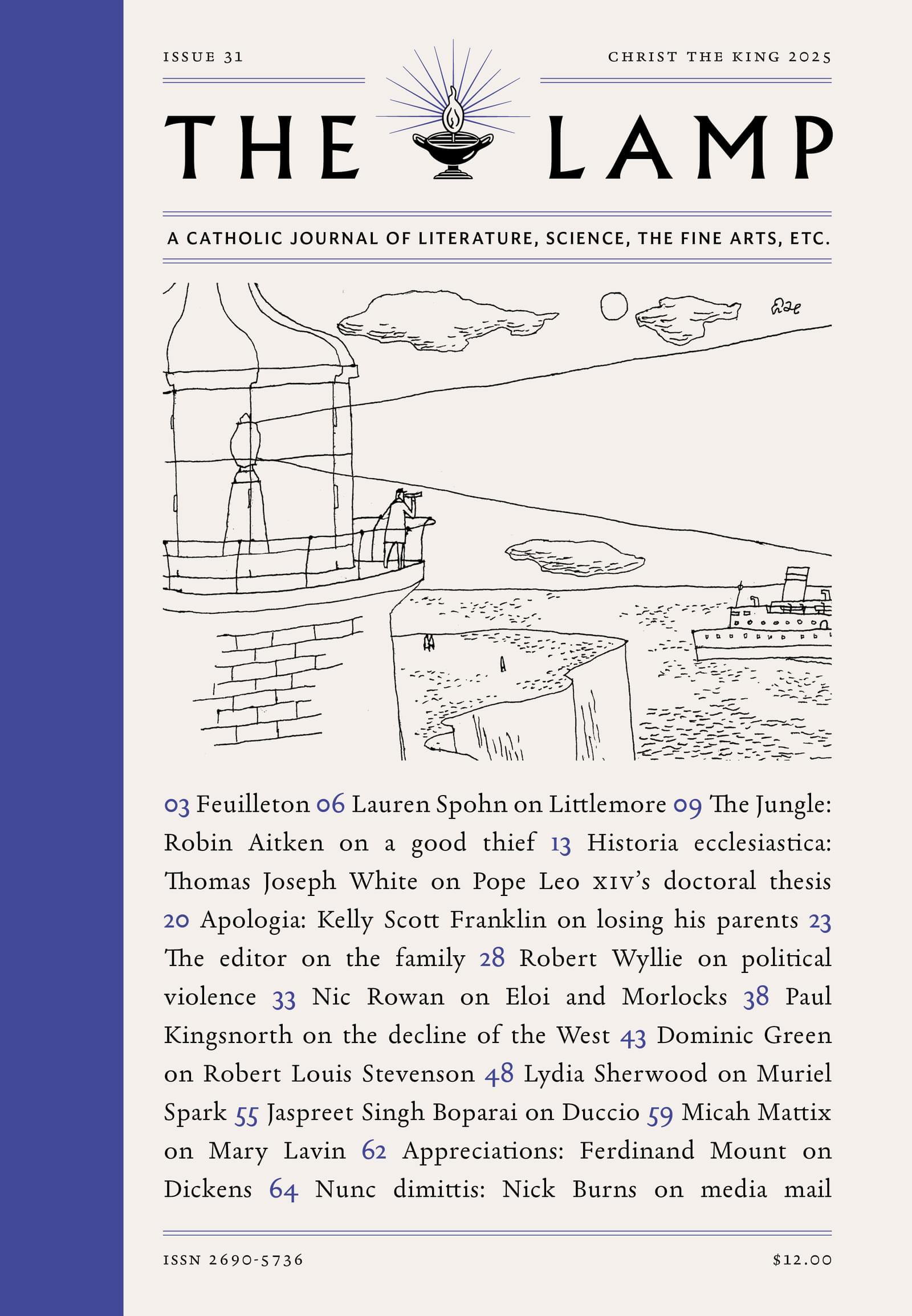That which is pleasing to the eye ought to be nourishing to the soul. Such was the animating principle in the work of the writer–
director Robert Benton, who died in May at the age of ninety-two. Benton, who won Oscars for writing and directing Kramer vs. Kramer and for writing Places in the Heart, was blessed with a near-peerless aesthetic sensibility and, more importantly, a benevolent, compassionate nature.
Benton helped start the New Hollywood movement during the 1960s, but he came to represent an alternative to its dominant personalities, who often sought nothing more than to startle and disturb audiences. His framing was impeccable, his camera moves were gracefully subtle but sometimes powerfully forceful, and his editing rhythms were mellifluous. The same of course could be said of his contemporaries and near-contemporaries—say, Martin Scorsese or Francis Ford Coppola—but unlike these, Benton was mild-mannered and tender-hearted. Benton understood that, even in an enterprise as profane as moviemaking, elegant technique ought to serve (relatively) noble ends.
Perhaps the final word on his essentially merciful vision appears on the poster for The Late Show, which starred Art Carney as a benignly doddering detective who comes into the orbit of a good-natured Southern California goofball played by Lily Tomlin. “The nicest, warmest, funniest and most touching movie you’ll ever see about blackmail, mystery and murder,” the advertising copy proclaims. That underrated movie, which was produced under the benevolent guidance of Robert Altman, would not be the last time that Benton redeemed genre material that would, in other hands, be unpleasant and unedifying.
Benton was born in Texas and grew up fascinated by the outlaw legends that defined his home state. “Kids used to dress up on Halloween as Bonnie and Clyde,” Benton told me in 2020 in the first of a handful of memorable interviews I conducted with him over the last half-decade. Although he had set himself up as an art director at Esquire magazine, then under the editorship of Harold Hayes, Benton and his colleague David Newman had an inkling that getting into the movies might be a better career move—and that a script on the travails of Bonnie Parker and Clyde Barrow might be their ticket. “We began to think, ‘This would be a kind of good American New Wave movie,’” Benton told me. “The day we started to write, Peter Bogdanovich, who was doing a monograph on Hitchcock at that point, was having a screening of Rope. We jumped ship and went to the Museum of Modern Art, and the three of us sat in a room and watched Rope.”
Benton and Newman grabbed the brass ring on their first try with their script for Bonnie and Clyde, but authorship of the resulting film must be divided among several participants: the star-producer Warren Beatty, the director Arthur Penn, the cutter Dede Allen—all of whom possessed a far more severe, strident sensibility than the gentle Benton. When it was released in 1967, the movie was a sensation among young audiences, and when seen today, it suggests the period of its release—the Vietnam era, the counterculture—more strongly than it does the Great Depression era it was allegedly aiming to reproduce.
After Bonnie and Clyde, Benton and Newman were free from magazine journalism, and they churned out scripts at a rapid rate. The duo wrote or contributed to countless hot properties in the early 1970s—from Bogdanovich’s What’s Up, Doc? to the original Superman movie. (They had mined the same material earlier with a Broadway play: It’s a Bird . . . It’s a Plane . . . It’s Superman.) Yet beneath these commercial ventures was Benton’s actual temperament: quiet but expressive, fraternal yet observational. These qualities emerged in force in his debut as a director, the western Bad Company, starring Jeff Bridges and Barry Brown as ill-paired Civil War draft-dodgers whose wartime dereliction does not lead to laughs or thrills but, in the words of Roger Ebert, “a series of more-or-less self-contained episodes, and the episodes that work are worth the effort.” The megahit Bonnie and Clyde had shouted pro-lawbreaking platitudes, but Bad Company whispered its more lasting poetry.
Then came The Late Show and, in 1979, the cultural sensation Kramer vs. Kramer, starring Dustin Hoffman and Meryl Streep as the eponymous Kramers, whose unhappy separation—carelessly and hastily initiated by the discontent Mrs. Kramer—is undertaken with little thought as to its effects on their little boy, Billy (Justin Henry). Kramer vs. Kramer, which was based on a novel by Avery Corman, can be twisted to conform to each viewer’s ideological prejudice. Perhaps it is a brief for stay-at-home dads. Maybe it is a case against the influence of second-wave feminism on stay-at-home moms. Benton does not take sides, and instead seeks to comprehend the motivations of each of the participants, each confused by the decaying social fabric of the late 1970s. Among other things, Kramer vs. Kramer is the most even-handed courtroom drama since Otto Preminger’s Anatomy of a Murder, but it comes to life in its scenes of domestic tranquility and turmoil: Streep pondering her sleeping son before she announces her exit, Hoffman improvising a recipe of French toast in his newfound role of single parent.
Kramer vs. Kramer benefited from the incomparable visual acumen of its cinematographer, Néstor Almendros, who was almost certainly chosen by Benton on the strength of his collaborations with François Truffaut. For Benton, Truffaut was a mentor, guide, idée fixe—in fact, the man he had first wanted to sit in the director’s chair on Bonnie and Clyde. “Truffaut was a dear friend of mine, and I loved him and he’s responsible for whatever career I have in movies,” Benton told me before regaling me with a story about Truffaut’s colleague Helen Scott, who served as translator and intermediary during Truffaut’s famous discourses with Hitchcock.
“I have on my desk right now a photograph that was on the wall of Helen’s apartment, and when she died, I asked for it,” Benton said. “It’s a photograph of Helen Scott in a swimming suit, which is not really what you would expect. She’s sitting on the beach at Saint-Tropez with Lindsay Anderson, who was just about the same shape. She kept it above her desk in her apartment just to annoy Truffaut, because they [Truffaut and Anderson] hated each other. Just hated each other. Lindsay Anderson never forgave Truffaut for saying, ‘English cinema is an oxymoron.’”
Almendros was responsible for the shakily visceral shot of Billy riding his bicycle, newly without training wheels, toward the camera in Central Park in Kramer vs. Kramer—an extraordinary movie moment. The cameraman returned for Places in the Heart, a beautiful drama of Texans during the Depression. Here Sally Field stars as Edna Spalding, a woman saddled with early widowhood and beset by financial burdens when her husband, a lawman, is the victim of an accidental shooting by a young African American man (who is later lynched). The film ends with the most startling image in any Benton film: After tracking through a Protestant church service, the camera settles on Edna, her children, her deceased husband, and his deceased murderer—each of whom, whether living or dead, has evidently attained a state of peace with God and with one another.
Places in the Heart would remain the artistic summit of Benton’s achievement, but there are treasures among his subsequent works. Nobody’s Fool from 1994 and Twilight from 1998 were magnanimous studies in the senescence of their star, Paul Newman. The latter, also featuring Gene Hackman and James Garner, was derided as “benefit night for old-timers” by the film scholar David Thomson, but is that so bad when the old-timers in question were so good? His least likely projects were the rough-and-ready comedy Nadine (1987) and the E. L. Doctorow–derived gangster picture Billy Bathgate (1991), but both were marked by his qualities of humanity and discernment. His work was elevated by his collaborators, including Almendros (who died after shooting Billy Bathgate, in which he lit Nicole Kidman with especial warmth) and the composer John Kander, one half of the Kander and Ebb songwriting team. His only poor films were his last two: a misbegotten attempt at an adaptation of Philip Roth’s Human Stain and a wan contemporary drama called Feast of Love in 2007.
My own personal favorite of his films is Still of the Night, a Hitchcock-style thriller that dares to imagine its characters independent of the machinery of its plot. Benton, a film buff on par with his pal Bogdanovich, easily incorporates references to films he knows well—an after-dark Central Park pursuit calls to mind Jacques Tourneur’s Cat People, and an auction house set piece clearly tries to up the ante on the one in Hitchcock’s North by Northwest—but it’s the realness and relatability of the characters, even one suspected of murder, that give the film its power. Roy Scheider plays a tweedy, newly divorced psychiatrist who is drawn into the web of Meryl Streep (surprisingly glamorous), the mysterious inamorata of a deceased one-time client of Scheider’s. Yet Scheider is attracted to Streep not merely out of curiosity or lust but something like empathy. “Whatever you’re feeling now—guilt, remorse, whatever it is—it’s human, it’s understandable, it’s something we all share,” he says to her at one point—a line that possibly undercuts the film’s thrills but clearly enunciates its maker’s sublimely charitable view of life.
“I’ll leave you with this,” I said to Benton at the end of my first conversation with him in 2020. “As much as I love all of your films, you’ll be surprised at my personal favorite: I think Still of the Night is a brilliant, masterful piece of work.”
“Really?” Benton said. “Oh, that’s so nice to hear.”
“It is as though your Truffaut-influenced sensibility—” I said, but before I could continue, the cinephile in him picked up my train of thought.
“Well, yes. Okay, you’re absolutely right about the Truffaut influence—you’re bsolutely right,” he said. “But if you consider Bride Wore Black was not one of the major Truffaut films—” (Bride Wore Black was Truffaut atypically operating on Hitchcock’s terrain—Benton was trying to say that Still of the Night was equally atypical for him.)
“Fair enough,” I conceded.
“And it was a very good film,” Benton said of Bride Wore Black, before steering the conversation back to Still of the Night—and his appreciation of my appreciation.
“But I really appreciate that. I always thought I had not understood it,” he said of his script for Still of the Night. “In my rush to do another film, I had not understood it well enough. I didn’t think the script was strong enough. But on your recommendation, I’ll go back and look at it.”
I hope he did—and that after watching it, he realized he was just about the last decent man in American movies.




